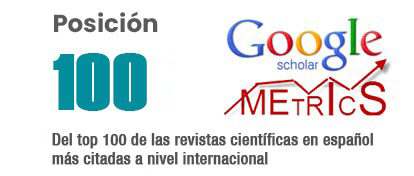Agrotourism as an alternative for the socio-economic development of the Río Bonito Parish
DOI:
https://doi.org/10.62452/9ckd3y30Keywords:
Agrotourism route, sustainability, development, socioeconomicAbstract
The present investigation was carried out in the Río Bonito Parish, Province of El Oro in Ecuador, with the objective of carrying out a study referring to agrotourism as a sustainable alternative for the socio-economic development of the parish, taking into account mainly the strengths and weaknesses of the territory for this key activity for socio-economic development; for which a non-experimental cross-sectional investigation was applied that aims to analyze a topic that was not treated mainly based on reviews of scientific articles and official pages with a similar approach, and information was collected through the survey, which was applied to 344 inhabitants of sample size that yielded the statistical formula for finite populations. The results were processed through the statistical program SPSS V.24, obtaining favorable results whose input to propose an agrotourism route that will take advantage of each space in the town to promote socio-economic growth, becoming a successful agrotourism candidate in the region for its diversity biological
Downloads
References
Aimacaña, E. C. (2017). La florícola Mil Rosse y su contribución al desarrollo del agroturismo en la parroquía Mulaló Provincia de Cotopaxi. (Tesis de Licenciatura). Universidad Técnica de Ambato.
Ecuador. Instituto Nacional de Estadísticas y Censos. (2010). Población por sexo, según provincia, parroquia y cantón de empadronamiento. INEC. http://www.ecuadorencifras.gob.ec/wp-content/plugins/download-monitor/download.php?id=322&force=0
Ecuador. Ministerío de Turismo. (2007). Diseño del plan estratégico de desarrollo de turismo sostenible para Ecuador "PLANDETUR 2020".. https://www.turismo.gob.ec/wp-content/uploads/downloads/2013/02/PLANDETUR-2020.pdf
Ecuador. Ministerío de Turismo. (2019). Turismo aportó con más de 2.300 millones a la economía ecuatoriana en 2018. https://www.turismo.gob.ec/turismo-aporto-con-mas-de-2-300-millones-a-la-economia-ecuatoriana-en-2018/
Flores, F. G. (2016). Diagnóstico turístico del Cantón Colines provincia del Guayas para el diseño de una ruta turistica. . (Tesis de Licenciatura). Universidad de Guayaquil.
Fondo Mundial para la Naturaleza. (2001). Directrices para el desarrollo del turismo comunitario.http://assets.panda.org/downloads/directrices_para_el_ecoturismo_comunitario_wwf_1.pdf
González, L. (2016). Análisi del agroturismo en España y otros modelos Europeos. Propuesta para su desarrollo. Universidad de Oviedo.
Mora, L., Díaz, N. P., & Vergara, D. A. (2018). El turismo en la matriz productiva de Ecuador: resultados y retos actuales. Universidad y Sociedad, 10(5), 1-12.
Muzha, M. A. (2019). Diagnóstico situacional turístico de la parroquia Río Bonito del Cantón El Guabo Provincia de El Oro. (Examen complexivo). Universidad Técnica de Machala.
Organización de las Naciones Unidas para la Alimentación y la. (2013). Ecuador en una mirada. http://www.fao.org/ecuador/fao-en-ecuador/ecuador-en-una-mirada/es/
Vite, H., & Vargas, O. (2018). Ganadería de precisión en la provincia de El Oro. Diagnóstico situacional. Espirales Revista Multidisciplinaria de Investigación, 2(17).
Zambrana, M. D., & Delgado, Y. M. (2018). El Agroturismo en Nicaragua. (Tesis de Licenciatura en Economía). Universidad Nacional Autónoma de Nicaragua.
Downloads
Published
Issue
Section
License
Copyright (c) 2020 Ignacio Efraín Mateo Burbano, Harry Vite Cevallos, Héctor Carvajal Romero (Autor/a)

This work is licensed under a Creative Commons Attribution-NonCommercial-ShareAlike 4.0 International License.
Authors who publish in Revista Metropolitana de Ciencias Aplicadas (REMCA), agree to the following terms:
1. Copyright
Authors retain unrestricted copyright to their work. Authors grant the journal the right of first publication. To this end, they assign the journal non-exclusive exploitation rights (reproduction, distribution, public communication, and transformation). Authors may enter into additional agreements for the non-exclusive distribution of the version of the work published in the journal, provided that acknowledgment of its initial publication in this journal is given.
© The authors.
2. License
The articles are published in the journal under the Creative Commons Attribution-NonCommercial-ShareAlike 4.0 International License (CC BY-NC-SA 4.0). The terms can be found at: https://creativecommons.org/licenses/by-nc-sa/4.0/deed.en
This license allows:
- Sharing: Copying and redistributing the material in any medium or format.
- Adapting: Remixing, transforming, and building upon the material.
Under the following terms:
- Attribution: You must give appropriate credit, provide a link to the license, and indicate if any changes were made. You may do this in any reasonable manner, but not in any way that suggests the licensor endorses or sponsors your use.
- NonCommercial: You may not use the material for commercial purposes.
- ShareAlike: If you remix, transform, or build upon the material, you must distribute your creation under the same license as the original work.
There are no additional restrictions. You may not apply legal terms or technological measures that legally restrict others from doing anything the license permits.




